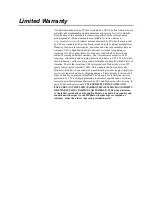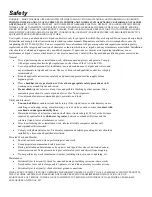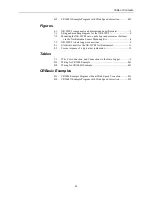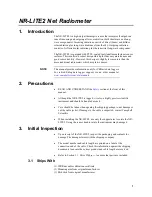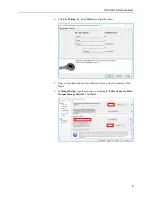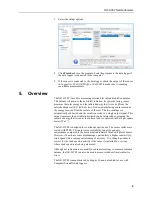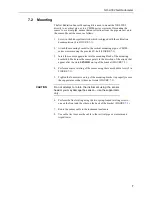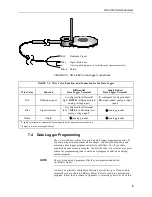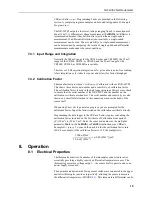
NR-LITE2 Net Radiometer
10
(p. A-1)
. Programming basics are provided in the following
section. A complete program example can be found in Appendix
.
The NR-LITE2 outputs a low-level voltage ranging from 0 to a maximum of
about 15 mV. A differential voltage measurement (
VoltDiff()
in CRBasic) is
recommended because it has better noise rejection than a single-ended
measurement. If a differential terminal is not available, a single-ended
measurement can be used. The acceptability of a single-ended measurement
can be determined by comparing the results of single-ended and differential
measurements made under the same conditions.
7.4.1 Input Range and Integration
Normally the 200 mV range for the CR300-series and CR1000X, the 25 mV
range for the CR800, CR850, or CR1000, and the 50 mV range for the
CR3000, CR5000, or CR9000X are suitable.
The slow or 60 Hz rejection integration or f
N1
gives a more noise-free reading.
A fast integration or f
N1
takes less power and allows for faster throughput.
7.4.2 Calibration Factor
The manufacturer provides a
Certificate of Calibration
with each NR-LITE2.
This shows the sensor serial number and a sensitivity, or calibration factor.
This calibration factor is used in the data logger program. Always cross-check
to ensure that the serial number of the NR-LITE2 and the number on the
calibration certificate are identical. The serial number and sensitivity are also
shown on a small label attached to the connecting arm near the head of the
sensor itself.
When using
Short Cut
to generate a program, you are prompted for the
calibration factor. Input the factor listed on the calibration certificate directly.
Programming the data logger in the
CRBasic Editor
requires converting the
calibration factor included on the Certificate of Calibration from units of
μV/(W m
–2
) to (W m
–2
)/mV. Enter the converted number as the multiplier
parameter,
Mult
, in the
VoltDiff()
or
VoltSE()
instruction (see CRBasic
(p. B-1)
). To convert the units, divide the calibration factor into
1000. For example, if the calibration factor is 15.8, the multiplier is:
1000
µ
V/mV
15.8
µ
V/(Wm
-2
) = 63.29 (Wm
-2
)/mV
8. Operation
8.1 Electrical Properties
The thermopile consists of a number of thermocouples connected in series,
essentially providing a highly sensitive differential temperature sensor. The
thermopile generates a voltage output — the sensor itself is passive, and so no
power supply is required.
The upwards and downwards facing sensor surfaces are connected to the upper
and lower thermopile junctions respectively, allowing the sensor to measure
the differential temperature (FIGURE
). This temperature differential can be

